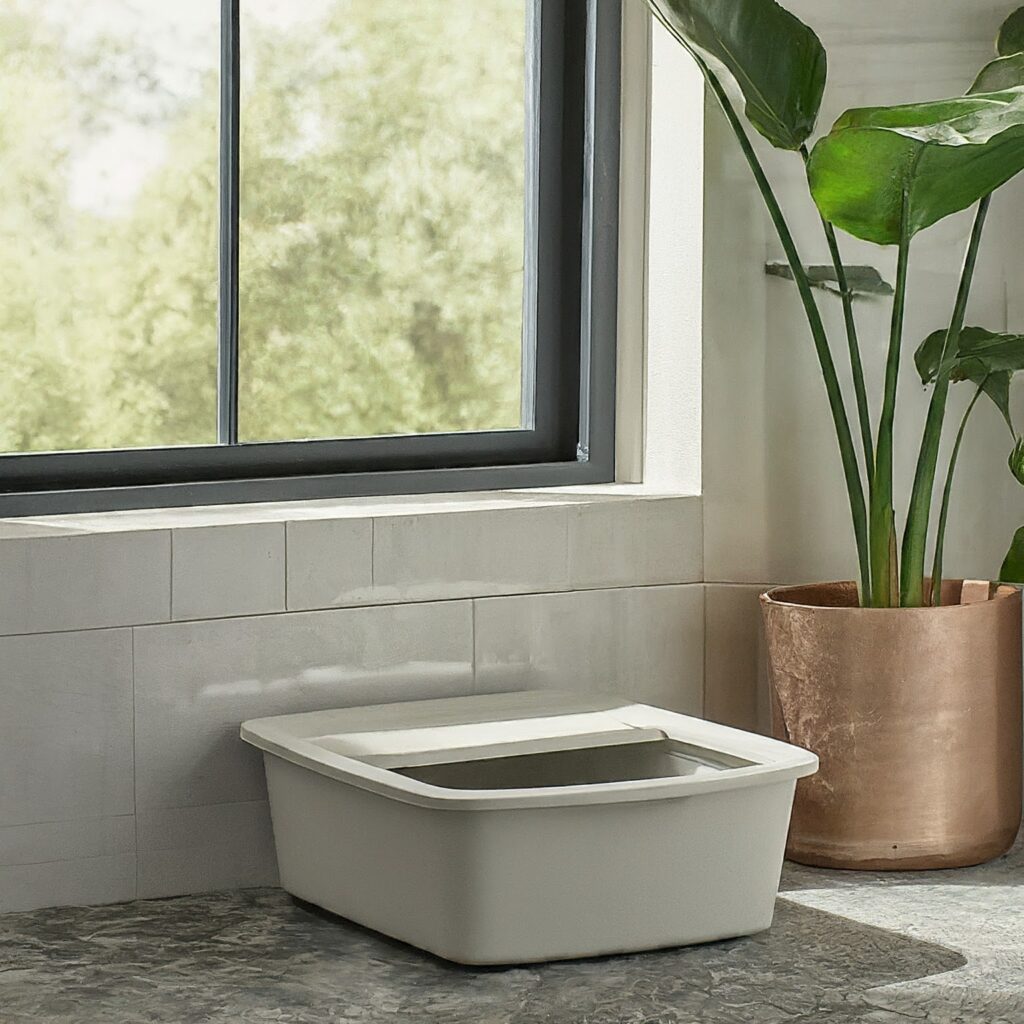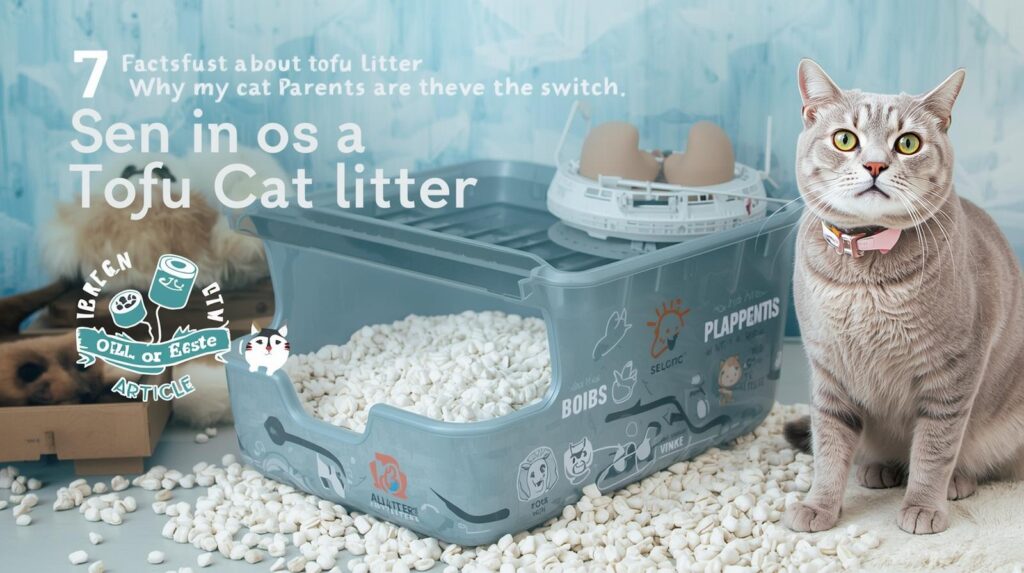The type of litter you use affects not only your cat’s comfort but also your home’s cleanliness, odor control, and even long-term costs. With so many options on the market, one of the biggest decisions comes down to clumping vs. non-clumping cat litter.
Both have loyal supporters and unique advantages, but they also come with drawbacks. In this guide, we’ll break down the key differences, pros and cons, health considerations, and even eco-friendly options—so you can confidently choose the best litter for your feline friend.
Table of Contents
1. Clumping vs. Non-Clumping Cat Litter
At the most basic level, cat litter falls into two categories: clumping and non-clumping.
- Clumping litter forms solid clumps when it comes into contact with moisture (urine), making it easy to scoop out only the soiled parts of the box.
- Non-clumping litter absorbs moisture but doesn’t clump. Instead, the entire box often needs to be emptied and replaced once it becomes saturated.
Each type comes with its own benefits and trade-offs, from odor control and cleaning convenience to cost and cat safety. The choice ultimately depends on your cat’s needs and your lifestyle as a pet parent.
2. What is Clumping Cat Litter?
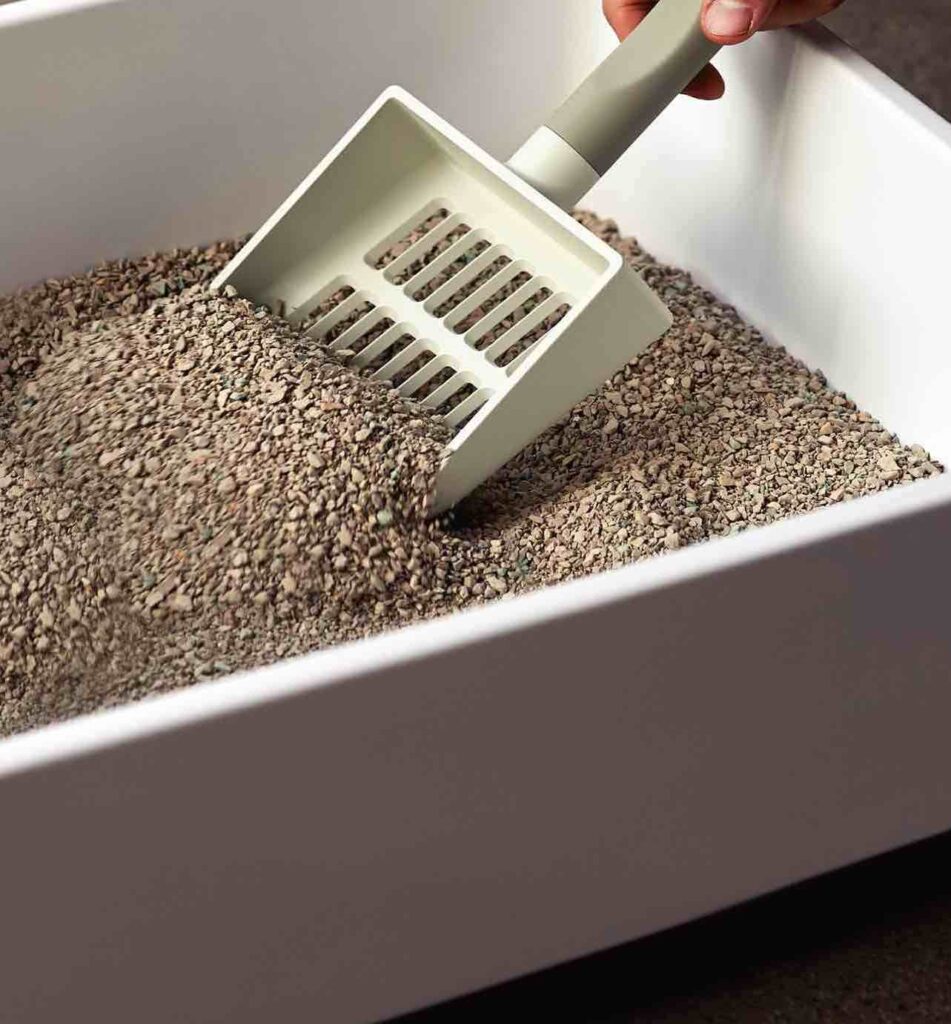
Clumping cat litter is designed to form solid lumps when it comes into contact with moisture, such as cat urine. The clumps make it easy for pet owners to scoop out soiled parts of the litter box while leaving the rest clean and fresh. This feature helps maintain a tidier environment without the need to dump and replace the entire litter box every time.
Common Materials Used
- Clay (Sodium Bentonite): The most popular ingredient in clumping litter, known for its strong absorption and clumping ability.
- Natural Alternatives: Some eco-friendly options use materials like corn, wheat, or walnut shells to create clumps while being biodegradable.
Quick Pros
- Easy Scooping: Waste clumps together, making cleaning faster and less messy.
- Odor Control: Clumps trap moisture and odor, keeping the litter box fresher for longer.
- Efficiency: Only the soiled portions need to be removed, so the litter lasts longer between full changes.
Quick Cons
Cost: Typically more expensive than non-clumping options, especially natural alternatives.
Dust: Traditional clay clumping litter can produce dust, which may bother sensitive cats or humans with allergies.
Tracking: Small particles may stick to cats’ paws and spread around the house.
3. What is Non-Clumping Cat Litter?
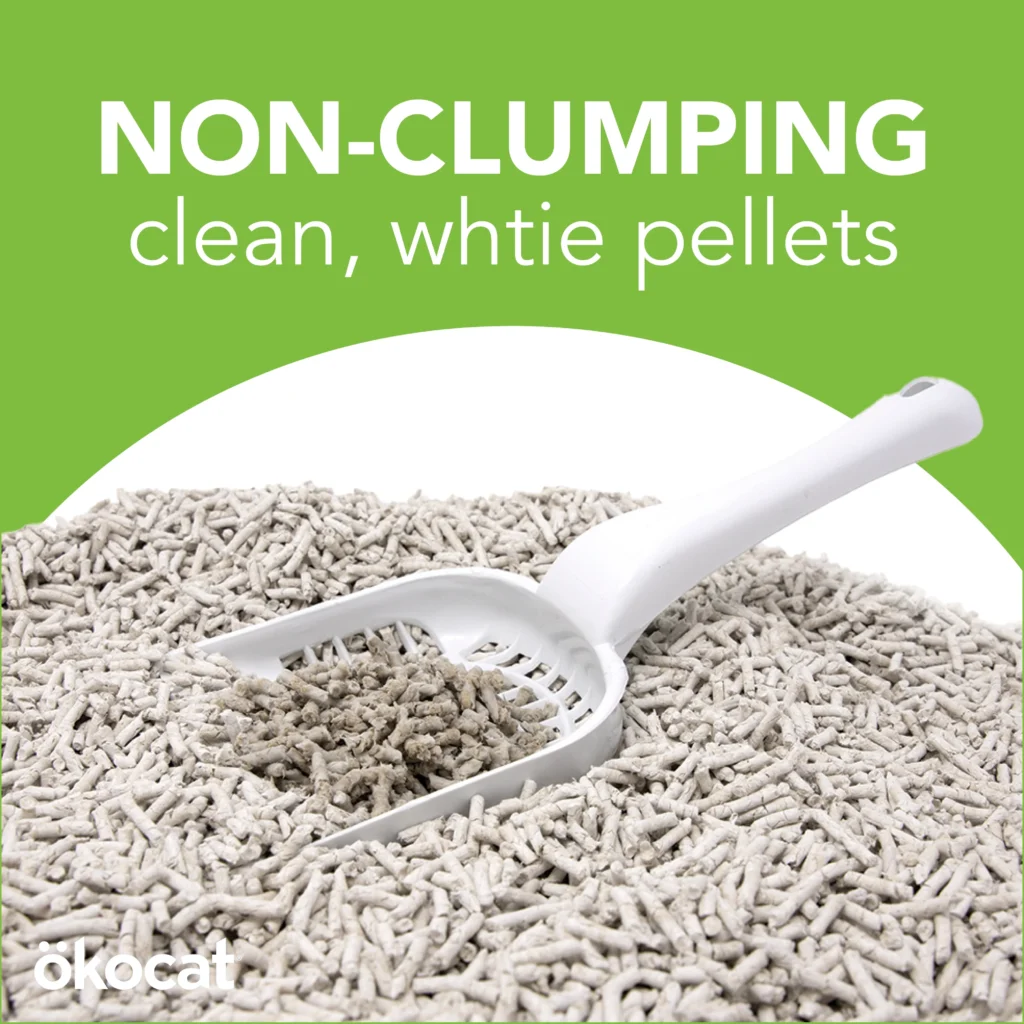
Non-clumping cat litter is designed to absorb moisture without forming solid clumps. Instead of binding liquid waste into scoopable lumps, it simply soaks up urine until it reaches its capacity. Because it doesn’t clump, the entire litter box often needs to be emptied and refilled more frequently.
Common Types
- Clay (Non-Bentonite): Traditional clay litters absorb moisture but do not clump, making them one of the oldest and cheapest options.
- Crystal (Silica Gel): Absorbs liquid and locks in odor with silica beads; long-lasting but more expensive.
- Pellets (Paper or Wood): Eco-friendly, biodegradable options that absorb liquid and break down gradually.
- Natural Non-Clumping: Corn, grass, or other plant-based materials that absorb but don’t clump.
Quick Pros
- Budget-Friendly: Usually cheaper upfront than clumping varieties.
- Less Dust: Many non-clumping options produce little to no dust, good for sensitive cats and owners.
- Safer for Kittens: Since kittens may ingest litter, non-clumping is often recommended to reduce health risks.
Quick Cons
Less Convenient: Scooping is harder, since urine-soaked areas cannot be removed individually.
Frequent Full Changes: Needs regular replacement of the entire box, which can be time-consuming.
4. Key Differences: Clumping vs. Non-Clumping Cat Litter
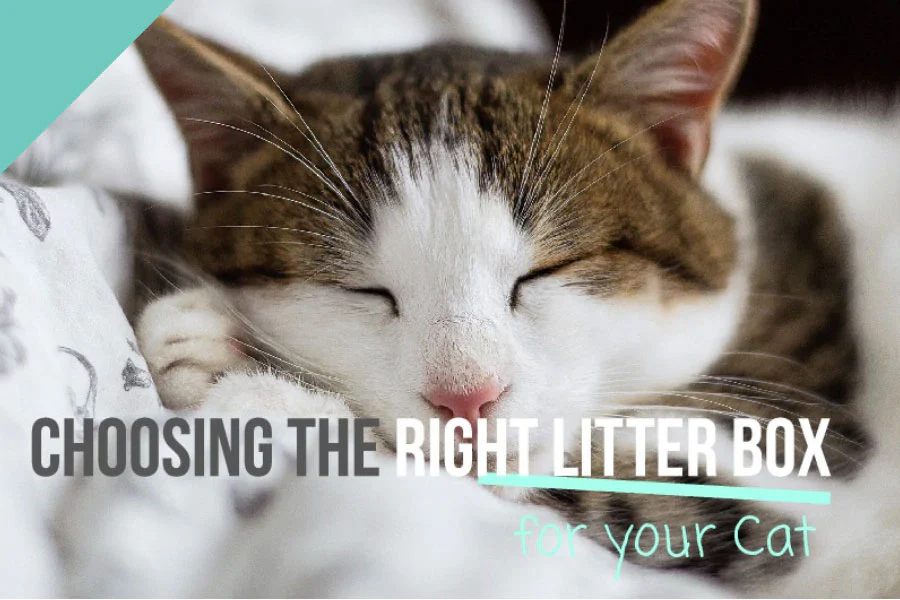
When choosing between clumping and non-clumping cat litter, the main differences come down to convenience, cost, and your cat’s safety. Below is a breakdown of the most important factors:
| Feature | Clumping Cat Litter | Non-Clumping Cat Litter |
|---|---|---|
| Odor Control | Excellent long-term odor control, as clumps trap moisture and smell. | Less odor control; urine spreads through the litter |
| Cleaning & Maintenance | Easy daily scooping of clumps; box stays fresher for longer. | Entire box often needs full replacement every few days. |
| Cost Efficiency | More expensive per bag, but lasts longer since only clumps are removed. | Dust may cause issues for sensitive cats; clumping clay is not recommended for kittens (risk of ingestion). |
| Cat Safety & Health | Dust may cause issues for sensitive cats; clumping clay is not recommended for kittens (risk of ingestion), sensitive cats, and sick cats. | Safer for kittens and every cat prone to eating litter; low-dust options available. |
| Longevity | One box can last weeks with regular scooping. | Shorter lifespan; litter must be replaced fully. |
Quick Takeaway:
- For adult cats and multi-cat households, clumping litter is usually the more practical choice due to odor control and easier cleaning.
- For kittens, sensitive and sick cats, or budget-conscious owners, non-clumping litter is a safer or cheaper option
5. Our Recommended Products
The right litter can make all the difference in your cat’s comfort and your home’s cleanliness. Below are some of the best clumping and non-clumping cat litters, each suited for different needs.
Best Clumping Cat Litter Brands
- Purina Tidy Cats Clumping Litter
A household favorite for multi-cat homes. It forms tight clumps that are easy to scoop and has strong odor control, keeping your litter box fresh for days.
- Fresh Step Advanced Clumping Litter
Infused with Febreze freshness, this litter not only clumps well but also fights odors instantly. Great for households that need extra odor protection.
- Arm & Hammer Clump & Seal
Powered by baking soda, this litter locks in odors and seals them with hard clumps. A good pick for owners who want low-dust and strong odor control.
- Dr. Elsey’s Ultra Unscented Cat litter
A premium low-dust formula, ideal for sensitive cats and humans with allergies. It clumps well while being gentle on respiratory health.
Best Non-Clumping Cat Litter Options
Purina Tidy Cats Non-Clumping Cat Litter
- Made from recycled paper, this eco-friendly litter is soft on kitten paws and recommended by vets for young cats.
- Feline Pine Original Non-Clumping Litter
Made from natural pine pellets, this litter absorbs liquid well while leaving behind a fresh wood scent. A great natural alternative to clay.
- Litter Pearls Tracksless Unscented Non-Clumping Crystal Cat Litter
Affordable, biodegradable, and highly absorbent—these pellets are perfect for single-cat or multi-pet households.
- PetSafe Non-Clumping Odor Control Cat Litter
Long-lasting, ultra odor control and moisture-absorbing, silica crystals trap odors without frequent changes. Best for cat owners who want minimal maintenance.
- FreshNews Multi Cat Non Clumping Litter
FreshNews made from recycled paper is the best solution for the owner who prefers non-clumping litter but also wants low maintenance and for multiple cats
Pro Tips for Choosing
- For kittens, srnstive or sick cats stick to non-clumping litters like paper or pine pellets (safer if ingested).
- For adult cats, clumping options like Tidy Cats or Dr. Elsey’s are usually more convenient and cost-efficient.
- For odor-sensitive homes, crystal or Arm & Hammer litters provide maximum freshness.
6. Ease of Cleaning and Maintenance
How easy a litter is to clean can make a big difference in your daily routine.
- Clumping Litter: Forms solid clumps that can be scooped out daily, leaving the rest of the box clean. This means you don’t have to empty the entire box as often, making it more convenient for busy owners. Some premium clumping litters even claim to keep the box fresh for weeks with regular scooping.
- Non-Clumping Litter: Absorbs liquid but doesn’t form clumps, so urine spreads through the litter. This often leads to odor build-up and requires a full box change every few days. While scooping out solid waste is easy, the extra time spent on full cleanings can feel inconvenient.
- Crystal and Pellet Options: Non-clumping crystals absorb moisture for weeks, making them lower maintenance than traditional clay. Wood or paper pellets expand and break down when wet, so they also need full changes but are less messy than loose clay.
Bottom Line: If you want minimal daily effort, clumping litter is the easiest to maintain. If you don’t mind frequent box changes and want a safer or more natural option, non-clumping may still work well.
7. Health Considerations for Your Feline Friend
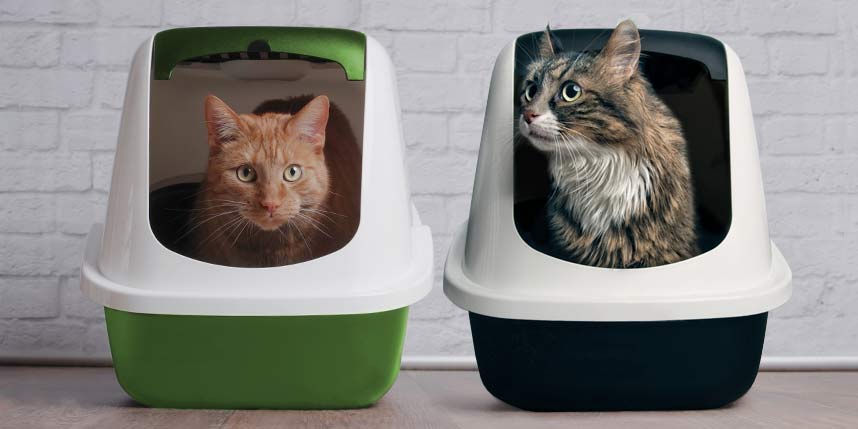
Your cat’s health should always come first when choosing between clumping and non-clumping litter.
- Respiratory Concerns: Some clay-based clumping litters create dust that may irritate cats with asthma or allergies. Low-dust or dust-free formulas are better for sensitive pets.
- Ingestion Risks: Kittens may accidentally swallow clumping litter, which can expand in their digestive tract. For this reason, vets recommend using non-clumping options for young cats.
- Paw Sensitivity: Some cats dislike the texture of certain litters, especially larger pellets. Choosing a softer formula can help prevent litter box avoidance.
- Post-Surgery Care: After procedures like spaying or neutering, non-clumping paper or pellet litter is usually safer, as it prevents litter particles from sticking to incisions.
Tip: Always observe your cat’s behavior. If they sneeze, cough, or avoid the litter box, try switching to a gentler, low-dust alternative.
8. Environmental Impact and Sustainability
Cat litter doesn’t just affect your home—it also impacts the planet.
- Clumping Clay Litter: Made from sodium bentonite, which is strip-mined. This process is not eco-friendly and contributes to land degradation.
- Non-Clumping Clay: Still mined, but often used up faster, leading to more waste.
- Natural & Biodegradable Litters: Options made from corn, wheat, walnut shells, wood, or recycled paper are much more sustainable. Many are compostable (for solid waste only, never urine).
- Crystal Litter (Silica): Long-lasting but not biodegradable; however, it produces less overall waste compared to clay since it lasts longer between changes.
Eco-Friendly Choice: If sustainability is important to you, consider biodegradable non-clumping litters like paper or pine pellets, or plant-based clumping litters made from corn or wheat.
9. Conclusion Of Non-clumping vs. Clumping Cat Litter
When it comes to clumping vs. non-clumping cat litter, the “better” option really depends on your cat’s needs and your lifestyle as a pet parent.
- Clumping litters are best for convenience, long-lasting freshness, and multi-cat households. They trap odors effectively and make daily scooping easy
- Non-clumping litters are budget-friendly, low-dust, and safer for cats
At the end of the day, there’s no one-size-fits-all choice. If you want easy maintenance and odor control, go with clumping litter. If you need a cat-safe or natural option, non-clumping may be the way to go.
The best approach is to try both and see which one your cat—and your household—prefers. After all, the litter box should keep your pet comfortable while making your life easier, too.
10. FAQs About Clumping vs. Non-Clumping Cat Litter
1. Is clumping litter bad for cats?
Clumping litter is safe for most adult cats. However, kittens under 4 months should avoid it, as they may accidentally ingest the particles, which can cause digestive issues.
2. Can you mix clumping and non-clumping litter?
Yes, you can, but it’s not very effective. Mixing reduces the clumping power and makes cleaning harder. It’s usually better to stick with one type.
3. Which lasts longer: clumping or non-clumping litter?
Clumping litter generally lasts longer because you only remove soiled clumps instead of replacing the entire box. Non-clumping litter needs frequent full changes but more cheaper than clumping.
4. Is non-clumping litter better for odor control?
Not usually. But you can choose the non-clumping litter, which gives the odor control formula like Purina, PetSafe, and LitterPearls. These litter gives good odor control
5. What is the safest litter for kittens?
Non-clumping litters made from paper, wood, or other natural materials are the safest for kittens, since they can’t form blockages if accidentally swallowed.
6. Why do some vets recommend non-clumping litter?
Vets often suggest non-clumping litters for kittens and post-surgery cats, as they are safer to ingest and gentler on sensitive paws.
7. Which is cheaper: clumping or non-clumping litter?
Non-clumping litter is usually cheaper per bag. Clumping litter can be more cost-effective long-term

